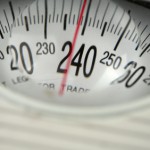There was an interesting article in the Wall Street Journal this morning titled "The Bigger the Belly, the Bigger the Risk." It cited an article published online yesterday in the Journal of the American College of Cardiology with the lead author being a Mayo Clinic (Rochester branch) physician named Francisco Lopez-Jimenez.
I followed the paper trail (that's not exactly correct since it's an online publication) and read the abstract, then another of Dr. Lopez-Jimenez's articles, then a commentary and followed those concepts back to a long article written in 2006 by a Yale staffer, Dr. David L. Katz.
Dr. Katz's article in the Harvard Health Policy Review (Vol. 7, No. 2, Fall 2006, pp.135-151) is one of the best I've ever read and I'll concentrate on it today and then move up to 2011.
Katz gives statistics (remember these are almost five years old) showing at least 15% of kids ages 6 to 19 are overweight with higher percentages for Hispanic and Black children. Then he notes that more than two thirds of kids over 10 who are obese will turn out to be obese as adults. They will then be subject to the big three obesity-relayed diseases, diabetes, heart disease and cancer. And while they are children, their quality of life is less, for many reasons.
What I didn't realize was even those who lose weight as adults, but were obese as kids, are at increased risk.
He goes on to explain that as a species, we ate, historically, when we could, stored fat for times when food was scarce, and exercised a lot. All that has changed, but we still tend to eat more than we should, given the fact that for many of us food is abundant. And our modern labor-saving devices mean we usually exercise far less than we should. We also eat the wrong things. The end result is weight gain, to the point of frank obesity for many.
Today's article said where you carry excess weight is more important than the sheer fact of being overweight. I read several of Dr. Lopez-Jimenez' publications, and their main thrust is that central obesity, i.e., having a large roll around your waistline, is much more detrimental than simply having a higher than usual weight or BMI.
Lopez-Jimenez and his co-authors looked at studies following patients with heart disease, but other papers support their basic theme. The NIH's director of cardiovascular sciences, Dr. Michael Laurer, who wasn't involved in the Lopez-Jimenez study, is quoted as saying, "Fat is not created equal and where fat is located makes a difference."
The other comment that was somewhat new also came from Dr. Laurer who said, "Fat isn't an inert substance." Apparently scientists have found a number of toxic chemicals can be released from fat.
I'm heading to the gym next where I'll see a number of men in the locker room who have built up their upper body muscles, but have a considerable roll around their mid-section. They need to adopt a new exercise, pushing away from the dinner table.


